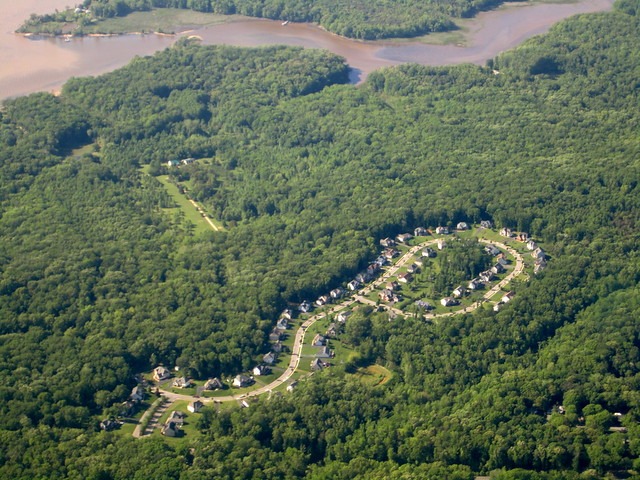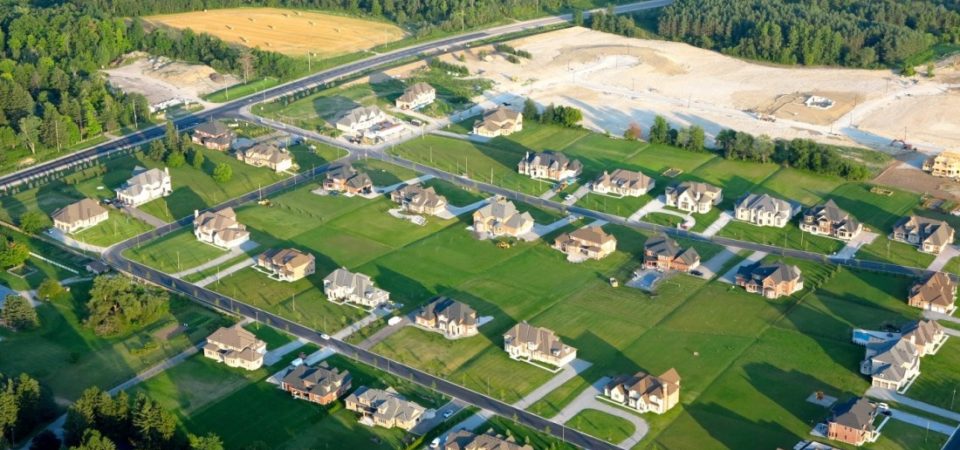The blog was originally published by The Overpopulation Project, on February 15, 2019.
The primary cause of the global biodiversity crisis is human-induced alteration and loss of natural habitats1. One of the most important causes of habitat destruction is housing growth, manifested both in rural and urban sprawl. The impacts of housing growth derive from both building human dwellings and their associated infrastructure such as roads. The threats to biodiversity include not only habitat lost directly to roads or houses, but the effects these human disturbances have on the larger landscape. Housing development increases impervious surfaces and the risk of fire, spreads pollutants, and changes nutrient and biogeochemical cycles. All these impacts are exacerbated by residents’ activities such as landscaping, introduction of non-native (sometimes invasive) species, and support for domestic predators. Changing land use and removing the natural land cover introduces new barriers to wildlife movements. In this newly fragmented landscape, the remaining natural fragments are often too small to sustain viable populations of native species, while housing growth favors “human adapted” synanthropic species. As a result, native wildlife typically decreases in abundance and richness.

Are protected areas, at least, protected from the detrimental effects of housing growth?
Not at all. In fact, housing growth poses the main threat to protected areas (PAs) in the United States, according to Radeloff et al. in “Housing growth in and near United States protected areas limits their conservation value”. Beautiful nature attracts people. As a consequence, since the 1940s, housing growth at the boundaries (up to 50km from the edge) of protected areas has increased at a rate far higher than the average housing growth in the US.2 The authors predict a scary total of 17 million additional houses within 50 km of PAs (national parks, national forests and wilderness areas) and 1 million within 1 km by 2030. (For a comparison, there were approximately 137.4 million housing units in the US in 20173.) Several studies have found that housing growth and rural sprawl over the past 40-50 years have detrimentally changed PAs and their surroundings, greatly diminishing their conservation value2,4,5,6. A sad fact supporting this conclusion: the abundance and richness of bird species of greatest conservation need are strongly negatively related to housing density at the boundary of PAs, and this effect has increased with time 7.
Conservation biologists and other environmental scientists make recommendations for managing the detrimental effects of housing growth on PA’s biodiversity. We find suggestions to conservation planners and land-use planners for more effective management strategies, and to policymakers to restrict housing development near PA’s boundaries (buffer zones), or to disincentivize development in certain sensitive areas. Notably missing is a recommendation for dealing with the main driver of housing growth, namely local or regional population increase.
Although between 1985 and 2000, growth in the number of households (and consequently housing units) globally was even more rapid than aggregate population growth8, the relationship between population growth and housing growth is very straightforward. During the period, population growth contributed 58% to household growth in countries including one or more biodiversity hotspots (areas rich in endemic species and threatened by human activities) and more than 90% to household growth in countries without biodiversity hotspots. The remaining growth is mostly explained by the reduction in household size, that occurs in countries of both small (around 2 members, e.g. EU, US) and large (more than 5 members like in Sub-Saharan Africa, Middle East) average household size countries9. Concerning urban sprawl, both population growth and redistribution of existing populations drive the transformation of agricultural, natural and semi-natural spaces into urban and other artificial uses, together with other important factors such as economic growth10.
When looking at conservationists’ proposed solutions to the detrimental environmental impacts of urban sprawl, the situation does not differ much from their suggestions for PAs. Taking the growing demand for housing as exogenous and uncontrollable seems to be the general approach. In an attempt to address the symptoms caused by ever-growing cities, researchers continue to hash out the old land-sharing versus land-sparing debate. They suggest high density, compact development, “managed growth,” “smart planning” and “sustainable urban planning”, and “green” cities11. This approach to urban sprawl ignores the root cause of housing growth and increased development: the growing demands of an ever-growing population.
We might think that housing growth is coming to an end soon in countries with below replacement fertility rates and already small average household sizes. Unfortunately, this is not the case, due to immigration-driven population growth (another topic studiously ignored by most conservationists). In Luxembourg, 129,000 new homes will be needed by 2030 to cope with the second largest population growth rate in Europe. Germany is struggling to meet growing demand, even with 290,000 new dwellings being built per year (2016)12, and the situation is little better in Sweden, which needs to build 600,000 homes by 2025 to satisfy the demands of a growing population with the lowest household size in the world (1.9 people per household)13.
Armed with immense understanding of the detrimental effects of housing growth on wildlife, can conservationists continue to ignore its fundamental causes, or fail to discuss the full range of policy options when dealing with threats to biodiversity?
For more information about the relationship between human numbers and biodiversity, see our earlier blog post about how high human population density eliminates the positive effect of forest protection on tropical biodiversity, and on the need for an open dialogue on immigration rates.
References:
- WWF. Living Planet Report 2018: Aiming Higher.
- Radeloff VC, Stewart SI, Hawbaker TJ, et al. Housing growth in and near United States protected areas limits their conservation value. Proc Natl Acad Sci U S A. 2010;107(2):940-945.
- U.S. Census Bureau. American FactFinder – Results. https://factfinder.census.gov/faces/tableservices/jsf/pages/productview.xhtml?src=bkmk.
- Wade AA, Theobald DM. Residential development encroachment on U.S. protected areas: Contributed paper. Conserv Biol. 2010;24(1):151-161.
- Radeloff VC, Hammer RB, Stewart SI. Rural and suburban sprawl in the U.S. Midwest from 1940 to 2000 and its relation to forest fragmentation. Conserv Biol. 2005;19(3):793-805.
- Wood EM, Pidgeon AM, Radeloff VC, et al. Housing development erodes avian community structure in U.S. protected areas. Ecol Appl. 2014;24(6):1445-1462.
- Wood EM, Pidgeon AM, Radeloff VC, et al. Long-term avian community response to housing development at the boundary of US protected areas: Effect size increases with time. Fuller R, ed. J Appl Ecol. 2015;52(5):1227-1236.
- Liu J, Daily GC, Ehrlicht PR, Luck GW. Effects of household dynamics on resource consumption and biodiversity. Nature. 2003;421(6922):530-533.
- UN Economic & Social Affairs. Household Size and Composition around the World 2017 – Data Booklet.; 2017. http://www.un.org/en/development/desa/population/publications/pdf/ageing/household_size_and_composition_around_the_world_2017_data_booklet.pdf.
- Colsaet A, Laurans Y, Levrel H. What drives land take and urban land expansion? A systematic review. Land use policy. 2018;79:339-349.
- Robinson L, Newell JP, Marzluff JM. Twenty-five years of sprawl in the Seattle region: Growth management responses and implications for conservation. Landsc Urban Plan. 2005;71(1):51-72.
- Housing Europe. The State of Housing in the EU 2017 | Housing Europe. Housing Europe. http://www.housingeurope.eu/resource-1000/the-state-of-housing-in-the-eu-2017.
- Boverket. Vi måste fortsätta bygga fler bostäder i Sverige – Boverket, 2018. https://www.boverket.se/sv/om-boverket/pressrum/presskonferens-vi-maste-fortsatta-bygga-fler-bostader-i-sverige/.

